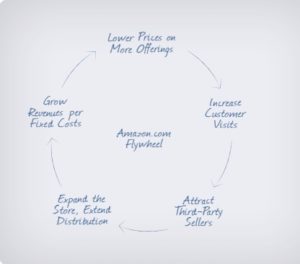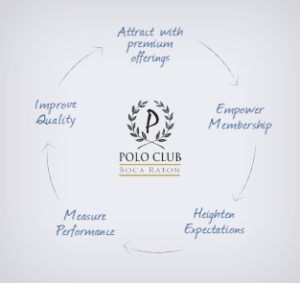Leaders and managers feel pressure to succeed.
The pressure may arise from within, in the form of professional pride, personal ambition or a particular dimension of one’s personality. It may originate from the organizational context that provides a series of interlocking expectations. In the club world, employees look to managers for guidance and inspiration; members, for premium experiences and solid value; the board, for strategic imagination and operational expertise.
Of course, when success manifests itself, management reaps much of the benefit. To be sure, the accolades for success are often liberally sprinkled across the organization. As the saying goes, “Success has many fathers, but failure is an orphan.”
Yet in the trajectory of leadership, failure is frequently the more reliable teacher, laying bare our oversights and inadequacies, but at the same time imparting important lessons and deepening our reservoirs of experience and resilience.
Success, on the other hand, can lend itself to facile explanations and, even worse, create the false sense that it can be readily replicated. The modest proposal we develop in this article is that success deserves the diagnostic scrutiny that failure so often necessitates.
Nothing Succeeds Like Success
The idea of strategy supports the notion that success is the product of design: thorough research, incisive analysis and thoughtful planning. But the obverse of this thesis has its adherents: success is a fluke—arbitrary, the product of luck, or circumstances that fortuitously fall into alignment. Peter Lynch, who managed Fidelity’s Magellan Fund to spectacular returns year after year, tilted in this latter direction with his advice that investors should sock their money into companies that any fool could run, because someday one would!
Indeed, the success of many clubs is not exactly a trade secret. A reliable checklist has emerged. They most likely have an excellent location; substantial scale; excellent facilities and robust social and recreational programs. Seen through this rear-view mirror such clubs seem to have been destined for success, while for those situated otherwise, it may seem that success will be a very heavy lift—and, therefore, especially in need of a break-through strategy.
Faced with this challenge, club leaders may grasp for a simplified strategy or a single-minded solution. The precise solution may take various forms: a project, a program or even a person. The ideal strategy is thus conceived as a kind of roadmap that, if closely followed, will take us to a new and exciting destination.
Your club is a great success! Now what?
Business historians reliably inform us that success is not an equilibrium state. Competition makes inroads, technology disrupts and tastes change. A glance at the top companies on the scene today—Apple, Google, Amazon—reminds us that market dominance is difficult to sustain. General Motors, Kraft Heinz and Sears are all storied brands, but it now appears that their story is largely told and that their greatest successes are behind them.
Management guru Peter Drucker dispensed a good deal of sage advice. Chief among his recommendations is that businesses, in the flush of success and at that very moment of strength, should invest their resources into sustaining those gains. That means understanding previous success at a deep level and undertaking the critical steps (i.e., investment, improvements, innovation, talent acquisition) that will maintain this forward momentum. It is, to use Jim Collins’ apt metaphor, akin to turning the flywheel.
 As the Flywheel Turns
As the Flywheel Turns
Among the many tools for strategic planning and implementation, there are few that rival this flywheel concept for both understanding success and then insuring that it does not prematurely end. A flywheel in a mechanical device is an actual wheel that, by design and weight, is difficult to start turning, but once in motion and further propelled it spins very fast and is difficult to stop. It is, in the terminology of physics, a device that builds, stores and then continues to deliver kinetic energy as it continues to work.
The principle has been applied by Jim Collins and his “Good to Great” team of researchers and consultants as they have sought to help practitioners build and sustain high performance. One of the group’s signal accomplishments was to apply the flywheel in an extended engagement with Jeff Bezos and his leadership team at Amazon. Following is the resulting flywheel for Amazon that is illustrative of the concept, how it works and how it can propel the reinforcement and expansion of strategic success.
Notice how the flywheel’s initial movement requires considerable effort. Offering low prices and attracting customers and re-sellers while also expanding infrastructure is no mean feat. However, notice also how initial traction can start to build momentum and the rate at which the wheel turns will inevitably pick up speed. Lower prices are attractive and fully capable of drawing in customers. As customer traffic builds, so too does the power of market concentration exert its pull on retailers. As infrastructure expands and improves to keep pace with heavy volume, fixed costs will invariably decline and this, in turn, allows further reductions in prices. The wheel spins faster, momentum builds, effort multiplies. This is the power of the flywheel effect.
Don’t Spin Your Wheels
Constructing your own club’s flywheel takes a different mindset. Dwight Eisenhower, as he reflected on the role of strategy in directing the monumental, multi-nation military effort that culminated in the Allied victory in World War II, made this interesting distinction: “Plans are nothing, planning is everything.”
No strategic plan, however well-conceived, will have the capacity to take off unless the planning is designed to build upon itself and accelerate its distinctive internal logic, seemingly independent of a plan or business objective. The magic gets bottled not in a cascade of goals or a set of priorities, but in a process or system that is, by design, reinforcing. Plans can only get formulated and written down, while that strategic planning process, if done well, enables us to tap market forces and human behaviors that have the potential to perpetuate themselves.
A Flywheel of Your Own
Think of the flywheel as another tool in your strategic planning arsenal. Good strategy continues to benefit from listening closely to your members, observing what competitors are offering and then continuously improving your own offering so that it creates maximal value for your members. But taking some time and thought to translate your own best strategic and operational insights into the flywheel structure will pay long-term dividend.
Supporting your strategy by constructing a plausible flywheel will potentially deliver significant benefits:
- Expand and deepen your thinking. The flywheel will provide you with a more detailed strategy that is further bolstered by a series of cause-and-effect mechanisms. No more big bets on “the next big thing” or a laundry list of incremental improvements.
- Accelerate effective execution. If your strategy does not gain short-term traction, then the flywheel can accelerate a quick diagnosis and quickly put you back on track. It can help locate the shortcomings or disconnects that often beset our implementation efforts and that are preventing the wheel from turning and gaining that all-important momentum.
- Feed success. The flywheel is moved forward by the accumulation of various cause-and-effect mechanisms. This means, quite simply, that you can feed any part of the flywheel and that, as a direct result, the club’s strategy will be advanced and gain strength.
So, What’s Stopping You?
To encourage your own clubs to incorporate the flywheel concept into its strategic thinking we offer several resources nearby. See the sidebar below on how to build your own flywheel and then brief case examples of how The Polo Club of Boca Raton and Westborough Country Club have developed a strong flywheel effect to drive improved club services and higher member satisfaction.
 How Westborough Country Club Turns Its Flywheel
How Westborough Country Club Turns Its Flywheel
When the McMahon Group assisted Westborough Country with its strategic plan a little over 10 years ago, they landed on a simple but powerful vision for the club: “Fun with Family and Friends.” The club was well located in an established, inner-ring suburb of St. Louis. Prosperous professional were well represented in the community—many of them young—and other reputable clubs were close by, including one literally across the street. The path of development had hemmed the club in and thus its footprint was confined to less than 100 acres and a relatively short par 68 golf course.
The vision of fun animated the planners to deliver the most appropriate and best amenities to attract a somewhat younger set of “family and friends.” Although the course had limited land, the plan included putting A4 grass on the greens (best of breed at the time) and used the latest bunker technology in their reconstruction. For its time, the full-service fitness center they conceived was the first of its kind at a private club in St. Louis. The fitness center was located above the pool house, which also was renovated in the process. The plan also included a casual pub and outdoor dining area. The plan coincided with the Great Recession, so the flywheel was not easy to set in motion. However, since then the club has attracted scores of new members—an energetic younger segment, most with families—and has set itself on a trajectory of ground with sound finances. The flywheel turns.
 How The Polo Club Turns Its Flywheel
How The Polo Club Turns Its Flywheel
Brett Morris, GM/COO at The Polo Club of Boca Raton in Boca Raton, Fla., has a unique perspective on the club business. He asks, “What business is there in the world where people choose to do business with you in advance and all you have we’ve got to do is take care of them on a daily basis?”
Morris takes this important commitment by the member as an opportunity to do more: “You’re consistently trying to raise the bar and measure those expectations on a daily basis. And so, we’re constantly looking for constructive feedback.” In other words, Morris takes that commitment and enlists the members participation in making the club even better. He effectively empowers all members to deliver constructive feedback.
Using Humm Tablets to measure how they’re doing—tens of thousands of sessions, each representing the members’ evaluation of, say, a meal—Morris and his team uses this big data set to boost and focus employee training and motivation. Quality inevitable improves; the bar gets raised; and the flywheel turns.


